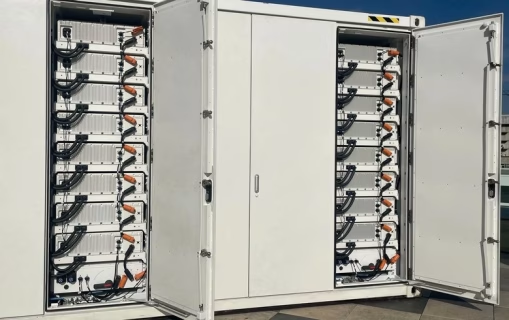ENGIE has officially completed both phases of its 200 MW battery energy storage system (BESS) at Vilvoorde, Belgium. The 800 MWh installation, composed of 320 lithium-ion battery modules, is now fully connected to the grid. Remarkably, ENGIE finished the project in about 16 months, two months ahead of its internal schedule. The project milestone also comes as the energy company continues development of the Drogenbos BESS at its power station in Flemish Brabant.
Strategic Role in Belgium’s Grid Flexibility
ENGIE built the Vilvoorde BESS to provide key grid flexibility. The system can absorb 200 MW of power for four hours, then inject energy back for another four hours. That bidirectional capacity helps balance renewables and supports grid stability. In addition, ENGIE tied the project to a 15-year capacity contract with Elia, Belgium’s transmission system operator, ensuring long-term operational economics.
To deliver the storage capacity, ENGIE partnered with Sungrow, which supplied 320 PowerTitan liquid-cooled battery units. The first 400 MWh half was already contracted and connected to the grid, and the second 400 MWh followed shortly after. Sungrow’s design supports compact deployment and high thermal efficiency, critical for large-scale BESS.
Ambitious Expansion Plans on the Horizon
With the Vilvoorde BESS fully online, ENGIE is already exploring a third phase. The expansion would add another 100 MW / 400 MWh, bringing total capacity at Vilvoorde to 300 MW / 1,200 MWh, subject to permitting and grid availability. If approved, this would significantly boost the plant’s capability to support Belgium’s energy system.
ENGIE’s Growing Storage Portfolio in Belgium
The Vilvoorde battery park is not ENGIE’s only project. The company is also building other large-scale BESS systems in Belgium. For instance, a Kallo site has plans for 100 MW / 400 MWh. Meanwhile, a third project in Drogenbos (80 MW / 320 MWh) has secured a 15-year capacity contract via Belgium’s Capacity Remuneration Mechanism (CRM). Tractebel is providing technical support for the Drogenbos build-out, offering design review and construction supervision.
Driving Belgium’s Energy Transition
ENGIE’s battery systems are central to its flexibility strategy in Belgium. The company views large-scale storage as vital to integrating more renewable energy. Indeed, the Vilvoorde site alone can support the daily electricity needs of nearly 96,000 Belgian households when operating at full capacity.
Belgium’s regulatory setup helps make such projects viable. BESS projects in the country benefit from favorable permitting and long-term revenue mechanisms. ENGIE’s long-term contract with Elia provides a stable revenue base, easing finance and operation risks. Meanwhile, the government’s capacity market (CRM) further incentivizes storage for grid reliability. ENGIE’s expansion plans are aligned with its broader goal to scale its storage footprint in the country.

The Bigger Picture: Europe’s Energy Storage Boom
ENGIE’s Vilvoorde park is among the largest BESS systems in continental Europe, representing the growing importance of grid-scale storage. The move underscores how major utilities are shifting toward flexible energy infrastructure to support renewables, reflected in additional deployments such as the 25 MW Brecht BESS in Belgium now underway with SPIE. ENGIE itself has publicly committed to reaching 10 GW of battery storage globally by 2030. Projects like this help transform intermittent clean energy into a more dependable power source.
Project Factsheet
Operator: ENGIE
Location: Vilvoorde, Belgium
Power Capacity: 200 MW
Energy Storage: 800 MWh
Number of Battery Units: 320 PowerTitan modules by Sungrow
Full Operation Date: November 2025 (both phases)
Contract Type: 15-year capacity contract with operator Elia
Future Expansion: Planned 100 MW / 400 MWh third phase
Associated BESS Projects in Belgium: Kallo (100 MW / 400 MWh), Drogenbos (80 MW / 320 MWh)
Strategic Role: Grid flexibility, support for renewables, contribution to Belgium’s energy transition

